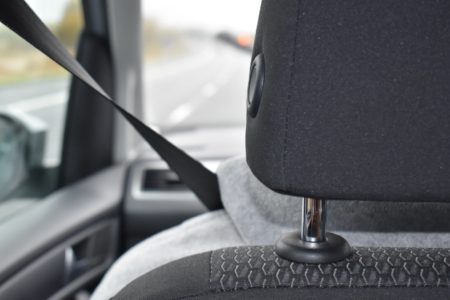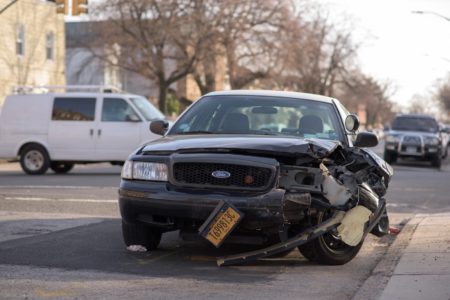Learn to Drive: 4 Driving Myths that Can Kill Your Teen and What You Can Do to Save Them
by Anne Marie Hayes
I was shocked to find these things I assumed were true are, in fact, very dangerous and contribute to thousands of teen deaths every year. Knowledge is power. As your teen learns how to drive a car there are simple things you can do to reduce the risks for your teen.
1. My teen is taking a driving course so they’ll be a safe driver.
A good driving school is a great start for teens learning to drive a car . They’ll learn good habits and procedures from a pro. The challenge in learning how to drive a car safely is that new drivers need 100 hours of in-car practice to reinforce those new skills and learn how to deal with some of the other situations they’ll need to handle. Those driving school courses typically provide 8 hours or less of in-car practice and concentrate on basic skills.
So it’s up to you to keep that great start going and introduce new skills as well. Just think of all the things there are to know – left turns (extremely dangerous!), double-lane left turns, underground parking, driving in snow, ice, fog, driving at night, country driving, merging, changing lanes – the list goes on and on. Teens learning how to drive a car need all the practice they can get.
Riding along in the passenger seat isn’t enough either. You need to structure your lessons. Decide what skills you’re going to practice before each lesson. Choose a safe location to practice that skill. Break the skill down into step-by-step instructions and be prepared to demonstrate the skill at the start of the lesson.
Make sure throughout the lesson, you maintain 360-degree awareness of the vehicles around you. It’s one of the most difficult skills for new drivers to master.

2. Our family always wears seatbelts so my teen will always wear one.
They may buckle-up every time they drive with you but that doesn’t mean they’ll automatically do it when they drive with their friends.
Driving a car with friends is new and exciting so sometimes they forget to buckle up. Or nobody else wears one so they figure one time won’t matter. Or there are 6 people in the car and only 5 seatbelts so they share one or sit on the floor. Or they’re just going down the block… You can see where this is going. Make sure you talk about all the possibilities and make it clear that wearing a seatbelt is NEVER optional.
But the other big danger is – being in the car with someone else who isn’t buckled up! Did you know that – if the car stops short, that unbuckled passenger can become a pinball smashing around inside the car. They can bash into your teen and critically injure or even kill them!
So you need to make sure your teen knows they need to wear a seatbelt every time – no excuses – AND they need to make sure everyone else is buckled-up too. Every time they get in a vehicle – even a taxi!
That requires a serious talk. You may even decide to put a penalty in place for if they don’t wear their seatbelt. True – it’s difficult to monitor if you aren’t there, but you need to impress upon them that the seatbelt is the thing that will keep them alive if they are in a crash. There are no do-overs in driving a car. Every single person must be belted every time.
3. My teen doesn’t drink alcohol so I don’t have to worry about drinking and driving a car.
Your teen may never drink alcohol – or they might. Mistakes happen or there could come a time when they’re depending on a ride from someone else who’s been drinking.
Make sure your teen knows they can never drive a car after they’ve consumed alcohol – or get into a car with a driver who’s been drinking. Make them a promise that if they ever call you because they need a safe ride home, you will come to get them (or arrange safe transport) no matter what time or where. Make it clear you would rather drive across town at 3:00 am to get them, than identify their body in the morgue the next morning.
You need to promise not to yell at them either. Hold that conversation until the next day when the situation has been resolved and everyone is calm.
A Family Driving Contract you both sign is a good idea. Make sure the rules apply to drug-use and other situations where they feel unsafe, as well.
4. Driving a car to and from school is safe.
Teens don’t get enough sleep. There are a lot of reasons – some beyond their control. The key is – mornings and mid-afternoons are times when they tend to feel drowsy so they could fall asleep at the wheel. That makes driving a car to and from school very dangerous!
Getting enough sleep is the best remedy, but teens need around 9 hours a night and that’s often impossible during the week. Sleeping in on the weekends can help.
A jolt of caffeine can provide a burst of alertness but takes about 20 minutes to kick-in. So a caffeinated beverage like coffee or some sodas could help if they drink it 20 minutes before they get in the car. If they feel drowsy before the drive home, they should take a short nap. That can help too.
Drowsy driving kills more young teens than drunk driving. Make sure your teen knows you will pick them up (see #3) if they are too tired to drive too.




